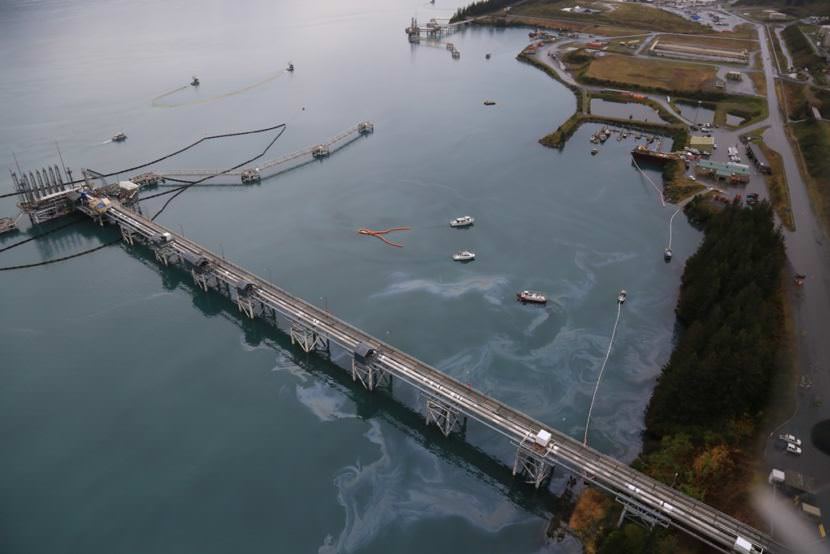
Cleanup efforts indicate that a crude spill at the Valdez Marine Terminal was bigger than first reported.
According to Alyeska Pipeline Service Company, approximately 400 gallons of an oily water mix had been recovered from the Port of Valdez as of Saturday night.
When the spill was first reported Thursday, Alyeska estimated the volume of crude spilled to be less than 100 gallons.
“The cause of the spill, piping that released an oily water mix, makes it very difficult to give a precise estimate of the amount spilled,” Scott Hicks, who is leading the response for Alyeska, said in a statement. “But any crude oil in the water is too much, and we will bring all necessary resources and expertise to the response.”
The spill happened during testing of the Marine Terminal’s loading arms — the pipes that deliver oil to tankers. During an unplanned pause in testing, water that was sent through the loading arms flowed out of the water intake piping and into Port Valdez.
Response to the spill is ongoing. According to Alyeska, more than 23,000 feet of boom and more than 25 vessels have been deployed during the cleanup efforts. Overflights conducted over the weekend indicate the sheens have been contained.
Responders have placed booms at the Valdez Duck Flats and the Salmon Gulch Hatchery.
There have been no reported impacts to wildlife.
Elizabeth Harball is a reporter with Alaska's Energy Desk, covering Alaska’s oil and gas industry and environmental policy. She is a contributor to the Energy Desk’s Midnight Oil podcast series. Before moving to Alaska in 2016, Harball worked at E&E News in Washington, D.C., where she covered federal and state climate change policy. Originally from Kalispell, Montana, Harball is a graduate of Columbia University Graduate School of Journalism.




